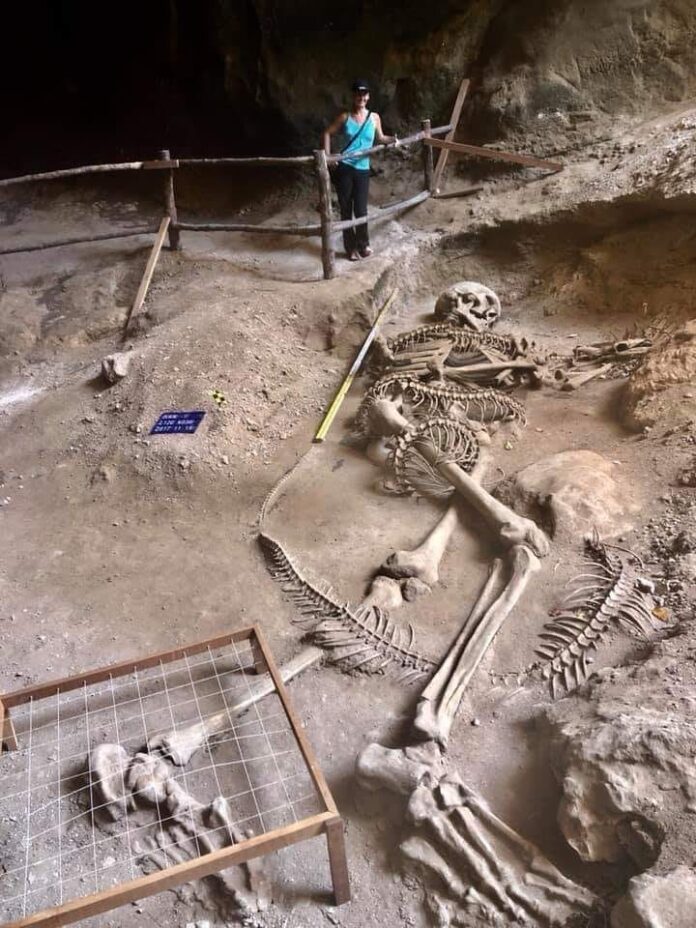“And the being a large and mighty man, and a man highly favored of the Lord, Jared, his brother, said unto him: Cry unto the Lord, that he will not confound us that we may not our words.” Ether 1:34
“AND for a testimony that the things that they had said are true, they have brought twenty-four plates, which are filled with engravings, and they are of pure gold. And behold, also, they have brought breastplates, which are large, and they are of brass and of copper, and are perfectly sound.” Mosiah 8:9-10

Species of Extinct Giants whose Bones fill the Mounds of America
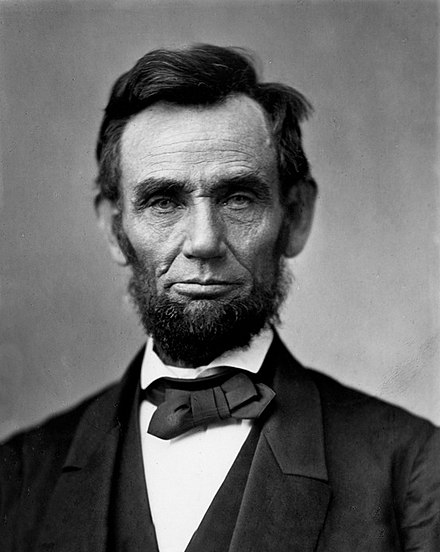
“Niagara Falls! By what mysterious power is it that millions and millions are drawn from all parts of the world to gaze upon Niagara Falls? There is no mystery about the thing itself. Every effect is just as any intelligent man, knowing the causes, would anticipate without seeing it… Yet this is really a very small part of that world’s wonder. Its power to excite reflection and emotion is its great charm. The geologist will demonstrate that the plunge, or fall, was once at Lake Ontario, and has worn it’s way back to its present position; he will ascertain how fast it is wearing down now, and so get a basis for determining how long it has been wearing back from Lake Ontario, and finally demonstrate by it that this world is at least fourteen thousand years old. A philosopher of a slightly different turn will say, ‘Niagara Falls is only the lip of the basin out of which pours all the surplus water which rains down on two or three hundred thousand square miles of the earth’s surface.’ He will estimate with approximate accuracy that five hundred thousand tons of water fall with their full weight a distance of a hundred feet each minute — thus exerting a force equal to the lifting of the same weight, through the same space, in the same time.
But still there is more. It calls up the indefinite past. When Columbus first sought this continent — when Christ suffered on the cross — when Moses led Israel through the Red Sea — nay, even when Adam first came from the hand of his Maker; then, as now, Niagara was roaring here. The eyes of the species of extinct giants whose bones fill the mounds of America have gazed on Niagara, as ours do now. Contemporary with the first race of men, and older than the first man, Niagara is strong and fresh to-day as ten thousand years ago. The Mammoth and Mastodon, so long dead that fragments of their monstrous bones alone testify that they ever lived, have gazed on Niagara — in that long, long, time never still for a single moment (never dried), never froze, never slept, never rested …” Abraham Lincoln (September 25, 1848)
Joseph Smith, Zelph’s Mound, and the Armies of Zion:
The Construction of American Indians from Archaeological Evidence in Illinois in the Nineteenth Century by Thomas J. Riley
“They crossed the river at what was called Phillips Ferry [Illinois] and camped there for a few days. It was here on the bluffs above the Illinois River about a mile downstream from Phillips Ferry that the first reported archaeological excavations on the lower Illinois River valley occurred on June 3, 1834 (Jelks 1984). This is a fascinating article by Kenneth Godfrey recently published in BYU Studies (1989) has collected seven of the known descriptions of the events that transpired there.
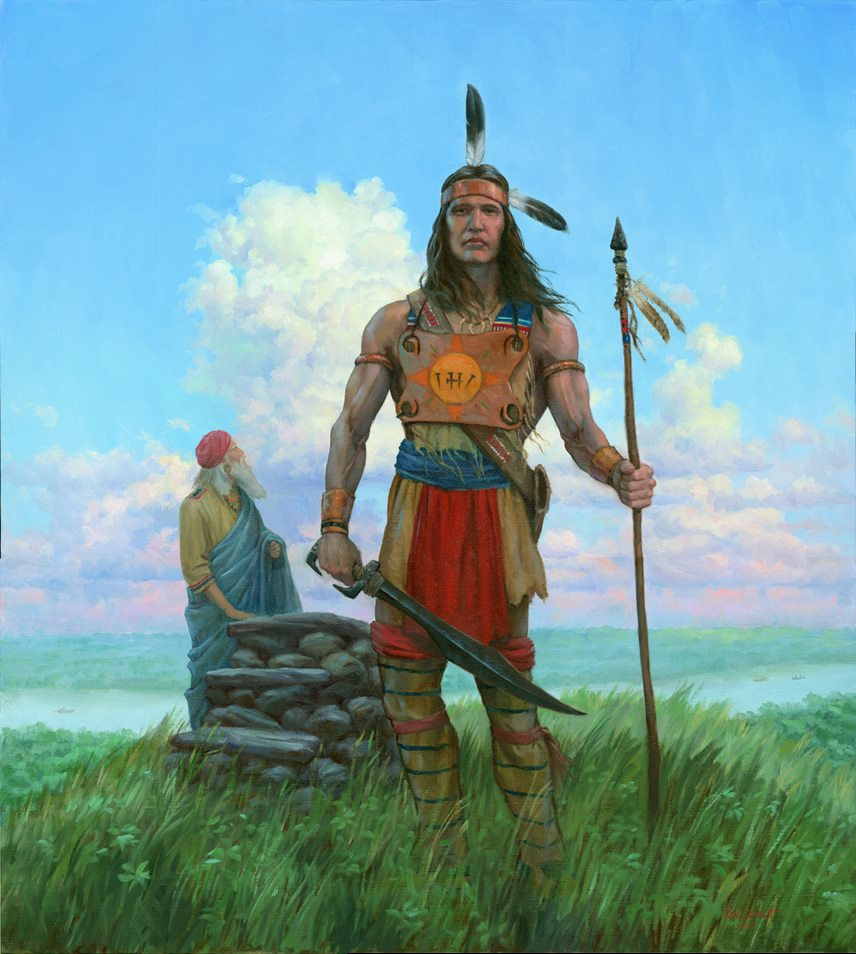
The seven stories of the finding of Zelph differ significantly from one another, but the one that is the official ‘History of the Church” contains most of the details that are known of the excavation:
“Tuesday the 3rd during our travels we visited several of the mounds which had been thrown up by the ancient inhabitants of this country, and this morning I went up on a high mound near the river, accompanied by several. From this mound we could overlook the tops of the trees and view the prairie on each side of the river as far as our vision could extend and the scenery was truly delightful.
On the top of the mound were stones which presented the appearance of three alters, one above the other, according to ancient order and the remains were strewn over the surface of the ground. The brethren procured a shovel and a hoe, and removing the earth to a depth of about one foot discovered the skeleton of a man, almost entire, and between his ribs was the stone point of a LAMANITE arrow which evidently produced his death. Elder Burr Riggs retained the arrow. The contemplation of the scenery around us produced peculiar sensations in our bosoms and subsequently the vision of the past being opened to my understanding by the Spirit of the Almighty, I discovered that the person whose skeleton we had seen was a White Lamanite, a large thickset man and a man of God. His name was Zelph. He was a warrior and chief under the great ONANDAGUS who was known from the Eastern Sea to the Rocky mountains. The curse was taken from Zelph, or at least in part. One of his thighbones was broken by a stone flung from a sling, while in battle years before his death. He was killed in battle, by the arrow found among his ribs, during a great struggle with the Lamanites. Elder Woodruff carried the thigh bone to Clay County” (Smith 1902:78-80)
The excavation into the “Zelph Mound” was not an isolated case for the Mormons in the nineteenth century. They were surrounded in Ohio with the remains of Earthworks, mounds, circles, etc. On the trip to Zion, Godfrey (1989:31) notes, Joseph Smith wrote:
“The whole of our journey, in the midst of so large a company of social honest and sincere men, wandering over the plains of the NEPHITES, recounting occasionally the history of the Book of Mormon, roving over the mounds, of that once beloved people… and gazing upon a country the fertility, the splendor and the goodness so indescribable, all serves to pass away time unnoticed.” After the above ellipses in red, The author Thomas J. Riley left out the following, “of the Lord, picking up their skulls & their bones, as a proof of its divine authenticity…” Joseph Smith Papers Letter to Emma Smith, 4 June 1834 Page 56. [Most likely the author left that part out, as he didn’t want to tie Joseph’s words as truth or him as a Prophet?]
Riley continued, “Of the very early history of the region which now embraces Lake County but little can be written. The Mound Builders had occupied this area, but little written language or oral tradition is left to use as accounts. I did however find the following:
Excavations…have revealed the crumbling bones of a mighty race. Samuel Miller, who has resided in the county since 1835, is authority for the statement that one skeleton which he
assisted in unearthing was a trifle more than eight feet in length, the skull being correspondingly large, while many other skeletons measured at least seven feet…” (Historical Encyclopedia of Illinois and History of Lake County and edited by Newton Bateman, LL.D. and Paul Selby, A.M. (1902) https://ilarchsurv.org/Resources/Documents/ias_journal_index.pdf
Mounds at Dunleith, Illinois – Smithsonian Excavation No.5
“No. 5, the largest of the group was carefully examined. Two feet below the surface, near the apex, was a skeleton, doubtless an intrusive Indian burial… Near the original surface, 10 or 12 feet from the center, on the lower side, lying at full length on its back, was one of the largest skeletons discovered by the Bureau agents, the length as proved by actual measurement being between 7 and 8 feet. It was clearly traceable, but crumbled to pieces immediately after removal from the hard earth in which it was encased….
Pike County – Smithsonian Excavation
 The other, situated on the point of a commanding bluff, was also conical in form, 50 feet in diameter and about 8 feet high. The outer layer consisted in sandy soil, 2 feet thick, filled with slightly decayed skeletons, probably Indians of intrusive burials. The earth of the main portion of this mound was a very fine yellowish sand which shoveled like ashes and was
The other, situated on the point of a commanding bluff, was also conical in form, 50 feet in diameter and about 8 feet high. The outer layer consisted in sandy soil, 2 feet thick, filled with slightly decayed skeletons, probably Indians of intrusive burials. The earth of the main portion of this mound was a very fine yellowish sand which shoveled like ashes and was
everywhere, to a depth of 2 to 4 feet, as full of human skeletons as could be stowed away in it, even to two and three tiers. Among these were a number of bones not together as
skeletons, but mingled in confusion and probably from scaffolds or other localities. Excepting one, which was rather more than 7 feet long, these skeletons appeared to be of medium size and many of them much decayed…
Metal Coin
“At Lawn Ridge, 20 miles north of Peoria, Illinois, in August of 1870, three men were drilling an artesian well, when – from a depth of over a hundred feet – the pump brought up a small metal medallion to the surface. One of the workmen, Jacob W. Moffit, from Chillicothe, was the first to discover it in the drill residue. A noted scholar of the time, Professor Alexander Winchell, reported in his book Sparks From a Geologist’s Hammer, that he received from another eye-witness, W.H. Wilmot, a detailed statement, dated December 4, 1871, of the deposits and depths of materials made during the boring, and the position where the metal “coin” was uncovered. The stratification took this form: Soil – 3 feet; yellow clay – 17 feet; blueclay – 44 feet; dark vegetable matter – 4 feet; hard purplish clay – 18 feet; bright green clay – 8 feet; mottled clay – 18 feet; paleosol (ancient soils) – 2 feet; coin location; yellowish clay – 1 foot; sand, clay and water – 11 feet. The strange “coin-medallion” was composed of an unidentified copper alloy, about the size and thickness of a U.S. quarter of that period. It was remarkably uniform in thickness, round, and the edges appeared to have been cut. Researcher William E. Dubois, who presented his investigation of the medallion to the American Philosophical Society, was convinced that the object had in fact passed through a rolling mill, the edges showed “further evidence of the machine shop.” Despite its “modern characteristics”, however, Dubois plainly saw that, upon the object, “the tooth of time is plainly visible.”
Both sides of the medallion were marked with artwork and hieroglyphs, but these had not been metal engraved or stamped. Rather, the figures had somehow been etched in acid, to a remarkable degree of intricacy. One side showed the figure of a woman wearing a crown or headdress; her left arm i
s raised as if in benediction, and her right arm holds a small child, also crowned. The woman appears to be speaking. On the opposite side is another central figure, that looks like a crouching animal: it has long, pointed ears, large eyes and mouth, claw-like arms, and a long tail frayed at the very end. Below and to the left of it is another animal, which bears a strong resemblance to a horse. Around the outer edges of both sides of the coin are undecipherable glyphs – they are of very definite character, and show all the signs of a form of alphabetic writing..As a sidelight, the enigmatic coin was not the only item that came from deep levels in Illinois. In 1851, in Whiteside County, another well-drilling bit brought up from a sand stratum 120 feet deep two copper artifacts: What appears to be a hook, and a ring. Their age is thought to be the same as that of the coin – about 150,000 years old.” 12th Annual Report of the Bureau of Ethnology to the Secretary of the Smithsonian Institution 1890-1891 (published in 1894)
GIANTS OF INDIANA
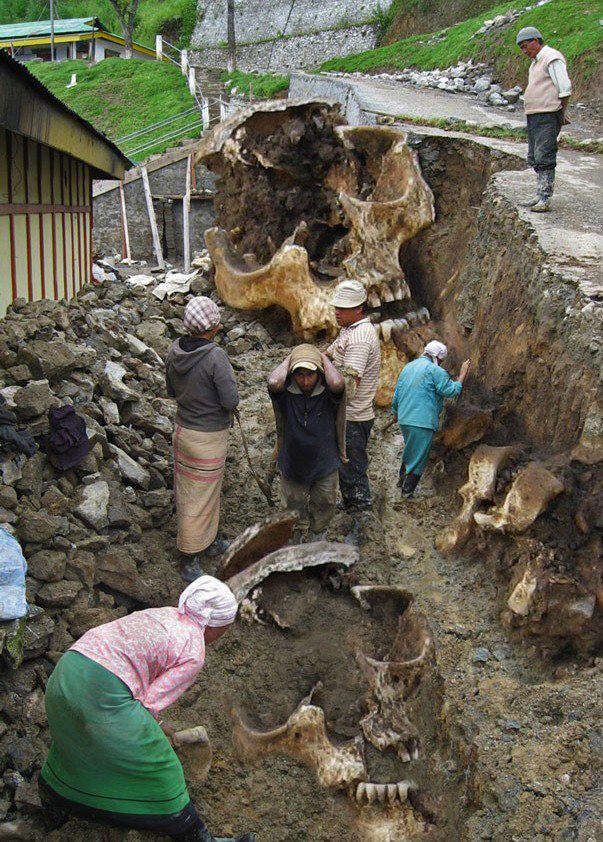 “In 1879, some Indiana archaeologists dug into an ancient burial mound at Brewersville, Indiana, and unearthed a human skeleton that measured nine feet eight inches in length. A mica necklace still hung around the giant’s neck. The bones, which were stored in a grain mill, were swept away in the 1937 flood.
“In 1879, some Indiana archaeologists dug into an ancient burial mound at Brewersville, Indiana, and unearthed a human skeleton that measured nine feet eight inches in length. A mica necklace still hung around the giant’s neck. The bones, which were stored in a grain mill, were swept away in the 1937 flood.
In 1925, several amateurs digging in an Indian mound at Walkerton, Indiana, eight skeletons were uncovered measuring in height from eight to almost nine feet. All eight giants had been buried in substantial copper armor.
Clay Township – John Stucky, Mr. Osborn and a few others were digging a grave on top of a mound near Siple’s and reaching the depth of about three feet came upon the remains of
three persons. The first was a huge being, the lower maxillary being large enough to pass over that of a living person, flesh and all. Mr. Stucky further said that the femur bone was several inches longer than that of an ordinary man.
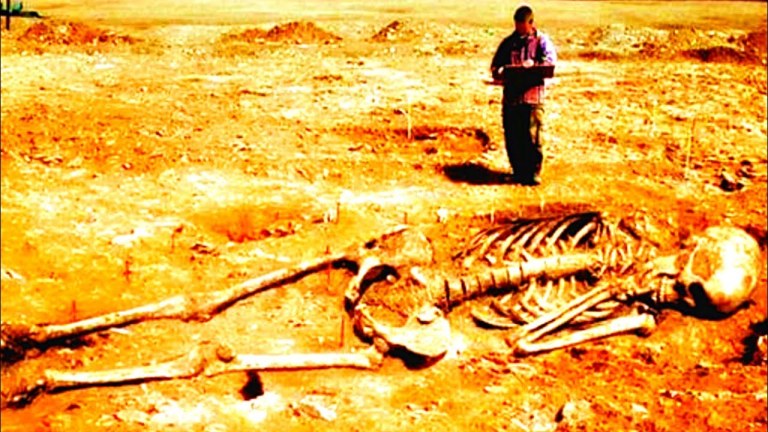 Mrs. Alice Taylor recorded an interesting story of Pike County as follows: “My mother, Clarissa Brenton Laws’ grandfather was George Parker, who died at an early age in Pike County. He was buried in a cemetery on a knob about three miles below Petersburg Indiana. When they thought the grave was dug, one of the men sounded his pick down and it sounded hollow; so they dug some more and found a metal casket with a skeleton between eight and NINE FEET LONG, WITH RED HAIR AND TEETH FILLED WILL GOLD.. This was an account of a burial of the great grandfather of Mrs. Taylor and she was born in 1856. https://burlingtonnews.net/giants2.html
Mrs. Alice Taylor recorded an interesting story of Pike County as follows: “My mother, Clarissa Brenton Laws’ grandfather was George Parker, who died at an early age in Pike County. He was buried in a cemetery on a knob about three miles below Petersburg Indiana. When they thought the grave was dug, one of the men sounded his pick down and it sounded hollow; so they dug some more and found a metal casket with a skeleton between eight and NINE FEET LONG, WITH RED HAIR AND TEETH FILLED WILL GOLD.. This was an account of a burial of the great grandfather of Mrs. Taylor and she was born in 1856. https://burlingtonnews.net/giants2.html

